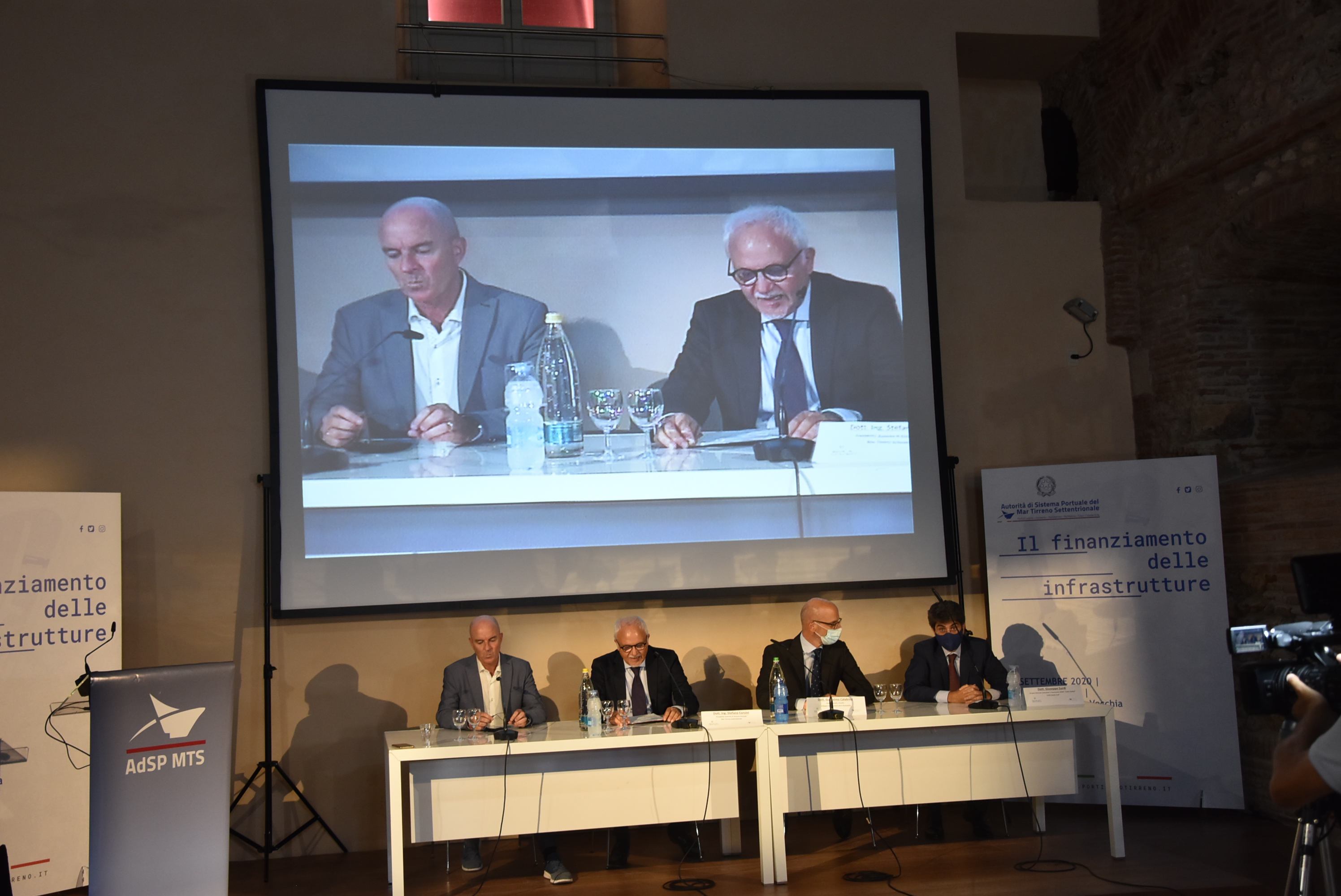Circumstances beyond our control arise with a certain degree of continuity only in cases where we don’t do anything to stop them. Moreover, when we talk about ports and infrastructure – as happened this afternoon in the Old Fortress’s Sala Ferretti, in a seminar organized by the North Tyrrhenian Port Network Authority- it becomes a matter of priority to focus on minimizing the impact of adverse events, such as the Coronavirus, and reducing the unknowns that still weigh on the Italian economic system.
Developing a genuine resilience to the repercussions of negative events means, first of all, planning the future well in advance through a strategic vision that keeps project devising and reforms together. This is the key message launched by the speakers of the Conference.
First and foremost, Giuseppe Surdi, from the Industrial and Financial Research Group (GRIF) Fabia Gobbo- LUISS Guido Carli, who underlined how our country is currently moving in a complex economic scenario: “We are experiencing a long crisis period that dates back to 2008 and which has seen a progressive and radical change in our economic, industrial system”.
The very serious financial crisis, the downward spiral of 2011 and the Coronavirus have had a strong impact on our country’s economy. With a particular characteristic, that the pandemic has had a more devastating impact than previous crises.
On the other hand, public investment in infrastructure has gradually decreased over the years: while in the 1990s it represented more than 3% of Italy’s GDP, today it is only 1.8%. The impact that the lack of investment (in infrastructure and maintenance) has had on our Gross Domestic Product has caused an expenditure gap amounting to 1.1% of the GDP.
However, the general context is appealing, and indicates a certain turmoil even on the infrastructural front: the Recovery Fund, the mechanism identified at EU level to support recovery after the pandemic, promises to offer new development opportunities for relaunching in this case, a port sector that, like other industries, has been badly damaged by the Covid-triggered crisis.
“As we can learn from the press, to date 557 project files have been submitted for a total value of over 667 billion euros, amounting to three times what the EU has potentially made available (209 billion euros),” says Mr. Surdi. He stresses, however, that the crucial point is not to understand how many and which projects Italy can put in place, but what should be the vision that the country intends to follow to give full meaning to the keywords listed in the guidelines for the definition of the Italian recovery and resilience plan.
Santiago Larregola, EIB Financing Manager, and – above all – Guglielmo Calabresi, Head of Infrastructure Development Financial Area of the Cassa Depositi e Prestiti, are aware of this. In his speech, he stressed that it is no longer possible to linger over the projects to be presented to the EU: “One of the key principles of the Next Generation EU is the feasibility – he said – The journey is still a long one and calls for the numerous project descriptions to become real projects by 2023. The money must be spent by 2026.”
The president of the North Tyrrhenian Port Network Authority, Stefano Corsini, is also aware of this. In his speech he stressed the strategic role of planning to ensure proper project selection. A role that today is even more important due to a steady decline in public investments over the years.
Likewise, the public co-financing of infrastructure investments has increased from about 90% in the 80s and 90s to 50% in the 2000s and on the basis of the latest estimates it is believed that over the next few years it will not exceed 30% of the total.
If, on the one hand, this data makes us reflect on the importance that today’s public-private partnership projects have in a context of scarcity of public resources, for Mr. Corsini it also appears “very obvious that it is essential to reinstate public funding for infrastructure investments for the competitiveness and growth of our country”.
Not only: “As far as infrastructure is concerned, there are no real alternatives to the growth of public administration capacity. Mr. Corsini says this by pointing out how over the years the public administration has suffered “an impoverishment of technical skills, pursuing as a priority the respect of increasingly complicated procedures and losing sight of pursuing results, the real objective of administrative procedures.”
The conference therefore highlighted the possibility for Italy that, if the promises on infrastructure commitments are kept, it will be possible to make up for the lost ground over the last few years, increasing competitiveness and employment.
The port of Livorno has its challenges to face and win too, as the mayor of Livorno, Luca Salvetti, stressed at the opening of the conference: “Livorno no longer has the opportunity to very calmly manage its problems. We are in a hurry to do everything necessary so that the port does not become a regional port of call but remains a strategic hub in the Mediterranean.”
Translation by Giles Foster

